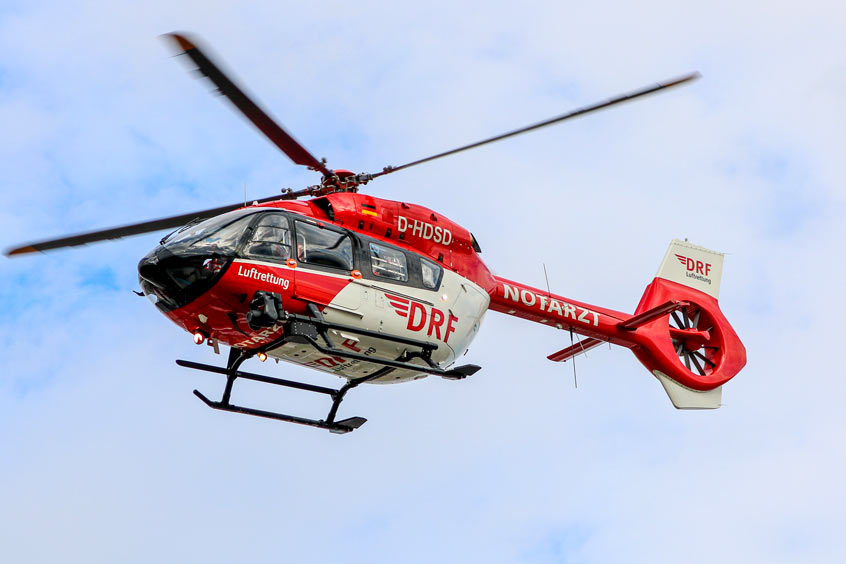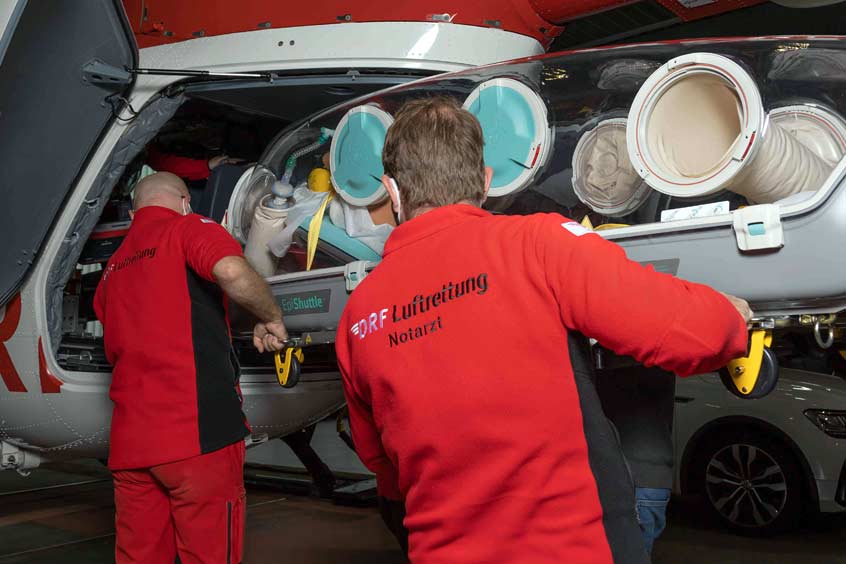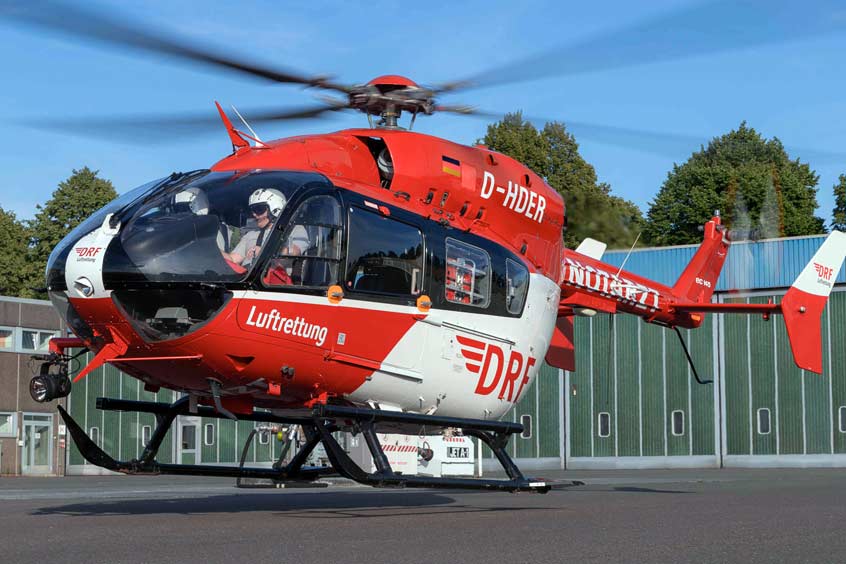Why visit ACE ’25?




German air ambulance provider DRF Luftrettung has replaced the BK117 operated from its Dortmund base with a modern EC145. The aircraft, dubbed ‘Christoph Dortmund’, will be equipped with an EpiShuttle isolation stretcher.
“Christoph Dortmund makes an extremely important contribution to the emergency medical care of people in North Rhine-Westphalia as an intensive care helicopter and also in emergency rescue,” says Krystian Pracz, CEO of DRF Luftrettung. The EC145 machine offers many advantages compared to the previously used BK117 model, especially for longer patient transports between clinics, which are sometimes located in other European countries.
“For us pilots, the new helicopter model makes work easier,” explains pilot and station manager Markus Sandmann. "The three-axis autopilot and the digital glass cockpit provide relief, especially on longer flights.”
At 700 km, the EC145 has a much longer range, uses up to 10 per cent less fuel and, at 254 km/h instead of 240 km/h, has a higher operating speed than the previous model. It also offers more space for patient care and better working conditions for the medical crew on board, thanks to optimised ergonomics.
The EpiShuttle isolation stretcher has various air filters, thus completely shielding the patient from the environment. This means that crews are protected against viruses and bacteria during transport. The EpiShuttle offers optimal security and, thanks to its access options, numerous treatment options during transport. In addition, there is no need for time-consuming disinfection of the helicopter, which means that the crew can take on another assignment more quickly.
With the acquisition of the EpiShuttle at Dortmund, the 11th DRF air rescue station to be equipped with the stretcher, the organisation has also responded to the COVID-19 pandemic. “Our station in Dortmund is the only air rescue station in NRW that has an EpiShuttle,” adds Pracz.
In the future, the EpiShuttles can be used for other infections, such as possible influenza waves. The medical crews at the station were familiarised with the system in detail, including through an extensive operational concept that takes a wide variety of scenarios into account.
Meanwhile, DRF Luftrettung's Christoph 42 helicopter is moving: its crews will start their life-saving missions from the Rendsburg-Schachtholm airfield. At the same time, a pattern change takes place as an H145 helicopter replaces the EC145 that was previously used.
Peter Huber, board member of DRF, welcomes the new Christoph 42: “We are very pleased that we can also have an H145 in Rendsburg, the most modern helicopter currently used in air rescue. A glance into the glass cockpit shows its differences to the previous machine: all flight data, for example about the engines or the flight situation, is shown to the pilots on large-format displays. The four-axis autopilot can automatically take over the control functions. On the weather radar, pilots can quickly recognise changing weather conditions. In addition, the configuration and equipment of the helicopter make it particularly suitable for night use.
“In addition, we are planning our 'Point in Space' to advance on the subject of satellite-based approach to clinics here in Schleswig-Holstein. The station is now optimally equipped with the H145,” Huber adds.
The move from Rendsburg's Imland Klinik to the new location took place during ongoing operations. “We would particularly like to thank the support of the team at the Rendsburg-Schachtholm airport around Jörg Köpping and the Rendsburg-Eckernförde district, and for the commitment of many colleagues without whom this move would not have been possible,” says Florian Reifferscheid, chief doctor of the station in Rendsburg.